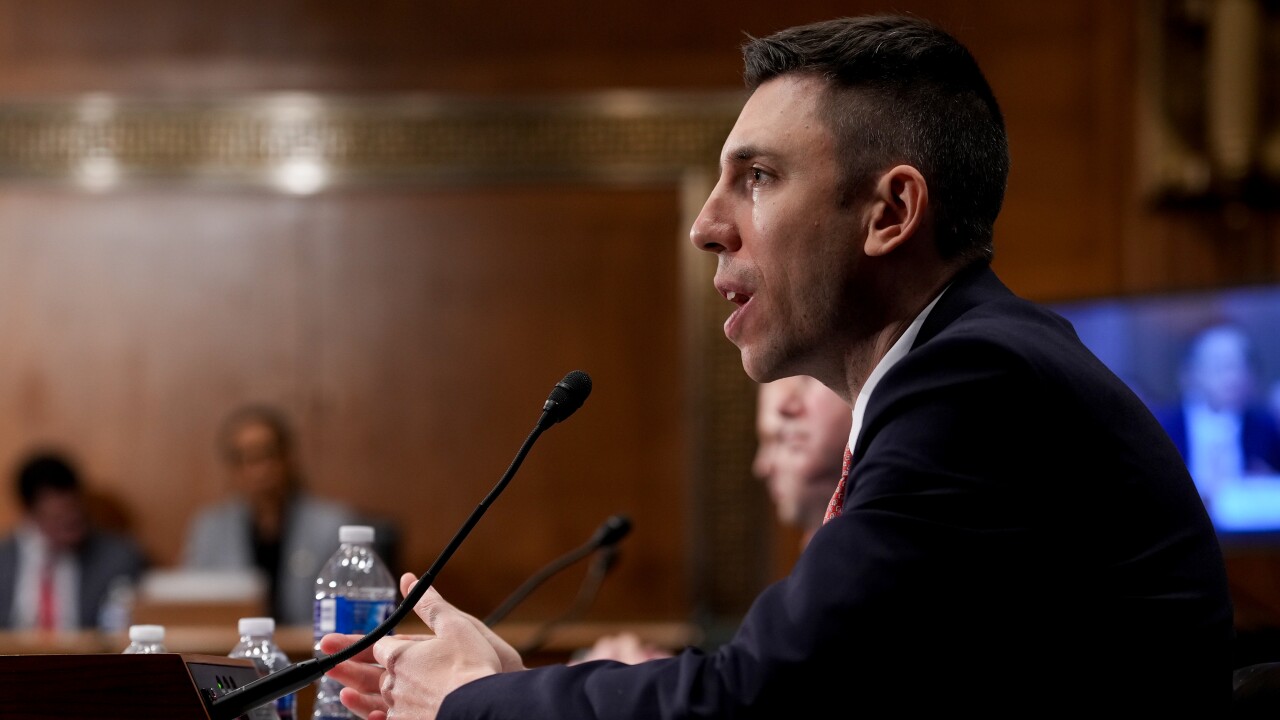Innovation has made communication, information gathering and payments digital, portable, fast and automatic — a fundamental reordering that has revolutionized how people and companies engage with each other and the world.
The problem is, that revolution's got a big hole: Digital identity. As ID technology automatically embeds in layers of apps, programs and devices, users will spend less time actively authenticating themselves. So the goal becomes the problem. The more authentication gives way to standardized pre-registered virtual keys, the harder it is for the world to know who we are with absolute certainty.
The digital ID market has massive potential, but many fundamental problems that must first be overcome. Among them: The companies best positioned to provide a viable digital ID platform are not the ones best positioned to benefit from it.

There is one common point of agreement, however: The physical keys and static passwords that identified us until just a few years ago are anachronistic, overused, and unsafe. The objective is — or at least should be — to build one virtual key that lets the entire world know who you are. A key that brings a billion new people into the financial system, that shortens lines at grocery stores and airports, that combats data breaches, that effortlessly swims from one app to another, and can’t be duplicated or stolen.
For any digital ID initiatives to be successful, recurring identity — or the largely invisible authentication that launches that millions of repeat users for that engage the app economy — has to be trustworthy and recognized. And without a global ID project, which is unlikely, the parties that are supervising the varied initiatives will need to agree on standards for that universal ID projects will have to meet.
Digital identity takes on a greater importance for 2019 and beyond because a new generation of retail advancements, financial inclusion, heightened security risk, and rapidly expanding cross-border finance require low-touch transferrable ID.
And there are fundamental day-to-day tasks that are different than just five years ago, and not easily secured by traditional authentication. Hailing a taxi happens on an app instead of waving one's hand. Paying for that ride happens simply by walking out of the car instead of fumbling around for cash. Accessing a television program comes through a streaming subscription instead of a remote. Booking a flight, checking into a hotel and checking out happen on a mobile device. Even shopping at a grocery store can happen without a cashier.
There are literally dozens of technology approaches, with new innovations constantly being introduced. For example, A
More than 120 countries have digital passports and more than 60 countries have national ID cards, according to
Distributed ledgers such as
The challenge and complexity of universal identity is daunting, enough to keep many companies on the sidelines.

“We don’t have a controlled experiment yet with new digital ID systems, but we do have cashierless stores, and currently the lack of some sort of ‘uber’ digital ID isn’t a huge impediment to payments. Would better and more convenient digital ID solutions help? Absolutely. Is their absence a show-stopper for payments? I don’t think so,” said Eric Grover, a principal at Intrepid Ventures.
Diagnosing the problem is easy. The treatment, however, is not. A digital identity standard needs to be automated, work in different places on different devices, and be interoperable with other digital ID systems. But there is a vast disconnect between those that need a solution and those who would offer it.
“Right now, users are locked into using separate ID systems from large companies like Apple, Facebook, Google, etc., which doesn’t benefit users,” said Gee Chuang, co-founder of Listia, a Sunnyvale, Calif.-based digital marketplace. Chuang sees a widespread need for a better way for payments industry participants to collaborate on authentication solutions.
He foresees a surge in capital and corporate development in digital ID solutions as urgency increases to upgrade today’s disparate patchwork of costly, inefficient systems with their competing— and increasingly confusing—processes to authenticate users for commerce and other routine operations.
Companies such as payment processors, financial institutions and governments are all taking a swing at solving the problem. But there are headwinds. Financial institutions have proprietary concerns.
“Investor enthusiasm for developing digital ID solutions has waxed and waned in recent years,” said Grover noting the existing payments authentication systems took years to evolve and are now “baked in” to the present ecosystem, despite their flaws and exposure to fraud.
But there is both a carrot and stick for faster movement in the near future. The barrage of
“The lack of a digital identity infrastructure is a fundamental friction in payments, and as the cost of coping with fraud, compliance and risk continue to rise, so is the pressure to do something about it,” said Dave Birch, global ambassador for Surrey, England-based Consult Hyperion.
Finding broad solutions to satisfy all parties will be challenging, but intensifying government mandates to strengthen customer authentication and guard consumer data could be catalyze enterprise-scale development.
The growth of
In many countries, the path to digital ID is through the government, In addition to Singapore's ID — which supports parking, building access, transit and other services — larger countries are advancing similar schemes.
And the ID2020 initiative aims to use digital ID to boost financial inclusion, noting
The government-backed digital ID projects usually build off of national ID cards, which have existed in some countries for decades. In the U.S. opposition to nationalized identity comes from
“In the U.S. it would be hard for government to mandate participation in a national digital ID system with a free-market economy, and all the various privacy and data-security issues,” said Ali Raza, managing principal with Atlanta-based payment consulting firm Blue Leviathan.
There are corporate initiatives underway from U.S.-based companies that, while global, present both promise and potential push back for digital ID.
Barclays is backing Evernym, which leverages distributed ledger technology for Sovrin. In a 12-month test, Evernym is experimenting with its solution with Barclays, the Red Cross and Irish Life, an insurer with other financial services.
In the non-profit financial market,
These companies have more in mind than just ID. Creating a standard for ID could, in the case of Mastercard, add another standard to the card network's "
“Banks in Europe that are being forced to implement strong customer authentication and KYC/AML processes should look at turning these costs into a platform for new businesses in the identity space,” Birch said.
This mix of participants — bank and non-bank, fintechs, profit and nonprofit — ensure many ideas will emerge in the coming year. As has been the case thus far, that diversity has made digital ID a global issue with the potential to expand financial inclusion, promote digital commerce and improve security. But it also means that's still much work to be done to bring the different parties together to make sure seamless ID's development is also smooth.





